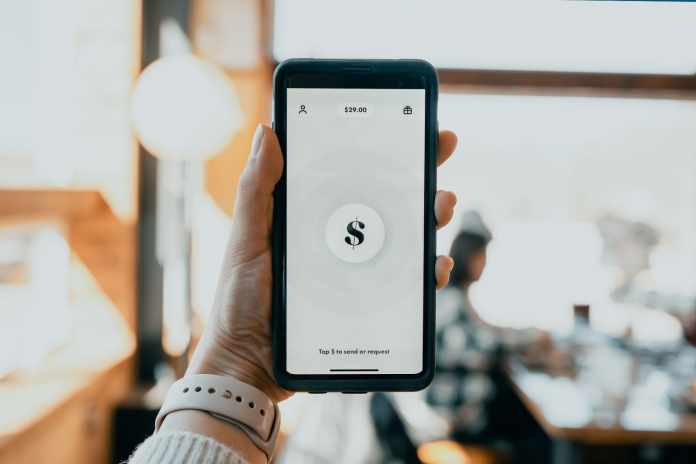Online payments are virtually everywhere. Cash begins to look like an unnecessary relic. Online payments are faster, safer, and much more convenient than cash. However, just like the good old cash, electronic money might be stolen if you don’t know how to ensure that your payment gateway is 100% secure. Maxpay.com payment security experts have kindly shared all the best tips on how to protect online payments and leave fraudsters hungry! Make sure to integrate them into your payment routines to make safe online money transfers.
1. Ensure Secure Connection on Websites
When you make payments on websites, it’s highly important to ensure that both websites and the payment pages where you get after clicking the “Buy” button are safe to use. You can easily do this by checking out fake id top if there’s a lock icon near the website URL. By clicking or tapping the icon, you can also see if the security certificate is valid.
You should also avoid giving your information to websites that have “http://” instead of “https://” The first, HTTP protocol, doesn’t encrypt requests and responses on the websites, while HTTPS uses TLS (SSL) to encrypt the data received and sent by a website launched in your browser. A website that deals with users’ personal and financial information must have the HTTPS protocol. Otherwise, it’s too exposed to any kinds of data breaches.
If everything is ok, you can keep using the website, but you still have to consider additional factors. More on that below.
2. Don’t Use Public WiFi Hotspots and Devices
Devices available for public use are highly exposed to fraudulent software installations. There’s an immense variety of undetectable data intercepting programs that can be installed right onto public WiFi hotspots and computers to steal unaware user data. That’s why you should always avoid making any payments via such devices. Fraudsters can use screen recording, keyboard input recording, and many other tricks to decipher your passwords, CVVs, and other valuable info to steal the money from your bank accounts.
As for using public WiFi hotspots, they can do a similar thing even if you are using a secure online store or banking application. New data interleaving methods are invented virtually every day, so you should avoid initiating any transactions via these hotspots. Use mobile traffic instead. Most modern smartphones let you share a WiFi connection with a laptop if needed.
3. Use WPA2 instead of WPA
WPA (Wi-Fi Protected Access) is a common protocol that protects your WiFi hotspot at home by using TKIP (Temporal Key Integrity Protocol). The truth is that this protocol is quite outdated and every beginner fraudster can bypass it to steal your personal data. You can change the security protocol to a more advanced WPA2 without changing the router. WPA2 can combine TKIP with a more advanced AES encryption protocol that makes deciphering data much more complicated or, as many developers say, impossible for most fraudsters.
4. Don’t Provide Your Data to Suspicious Websites and Apps
It costs nothing for fraudsters to copy entire websites and launch them on similar-looking domains to deceive people. For example, it can be a typical Amazon product page you click in Google Search, but the address is not “https://www.amazon.com/”, but “http://www.amzon.com/ or http://www.amazn.com/. Of course, marketplaces fight such things day and night, but they cannot guarantee 100% protection from fraudulent copies of popular websites as they pop up here and there all the time.
The best way to protect yourself from entering such websites is to type their URLs like “amazon.com” by hand instead of clicking the links in the search. To speed up the process, add your favorite online marketplaces and banking websites to the bookmarks in your browser.
Shopping and banking applications can also be substituted with fraudulent copies or just with attractive alternatives. You can see if the app is real by checking out the comments section and the app rating. If there are just a few comments, it’s probably not worth your trust. Popular shopping and banking apps, even if their rating isn’t 5 stars, have thousands of comments and the platform rating. For example, the AliExpress Shopping App was No.8 in Shopping on iOS in June 2021. An app by a popular platform rarely appears without such a rating.
5. Use Two-Factor Authentication for Your Accounts
Two-Factor Authentication (2FA) is a technically uncomplicated account protection method that makes your accounts inaccessible for fraudsters even if they steal both your login and password. That’s because 2FA uses your phone as the main key. Enabling 2FA makes it impossible to enter the account without entering a key sent by SMS to your phone. Most banks and money processing apps offer this feature for your account protection and it’s essential to use it.
If your device supports Face ID or Touch ID, you can confidently use them as well. Of course, both security technologies can be fooled with fake fingerprints and realistic 3D-printed heads, but the chances someone will invest in frauds like this are way below zero.
6. Use Wire Transfers for Large Amounts
Wire transfers are more expensive than other transaction methods, but they let you transfer large amounts of money to bank accounts without exposing your transaction data to any malicious entities online.
7. Use Credit and Debit Cards
All credit and debit card issuers offer secure payment verification and general security technologies to users. The most common of them include:
- SMS codes are sent to your phone.
- Encryption that makes hacking impossible.
- Protected automatic payment gateways for processing payments on marketplaces.
- Tokenization that substitutes real payment data with temporary fake tokens for transactions.
- 3D security for an extra layer of protection.
It’s All Better Now
As you can see, banks, payment processing platforms, and online stores do everything to protect your funds, but any security protocol is perfect for an unattentive user. Now you know all the common ways fraudsters can try to steal your data. Remember, anything suspicious can be fraudulent online.










